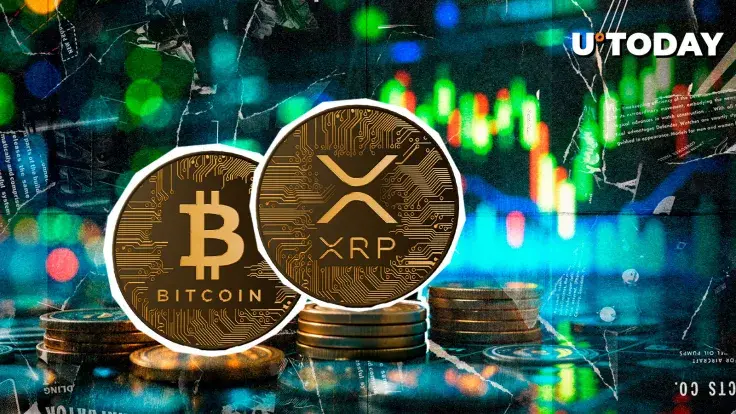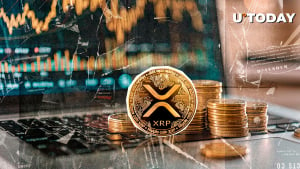
Disclaimer: The opinions expressed by our writers are their own and do not represent the views of U.Today. The financial and market information provided on U.Today is intended for informational purposes only. U.Today is not liable for any financial losses incurred while trading cryptocurrencies. Conduct your own research by contacting financial experts before making any investment decisions. We believe that all content is accurate as of the date of publication, but certain offers mentioned may no longer be available.
XRP, the native currency of the Ripple network, has achieved a remarkable feat against Bitcoin (BTC), the world’s leading digital asset. As highlighted by Glassnode, a prominent on-chain data platform, XRP has gained strong retail investor interest in the current market cycle.
XRP's retail boom vs. Bitcoin's institutional growth
Notably, XRP’s retail popularity has seen the ecosystem surge in active addresses since the 2022 bear market bottom. XRP’s active addresses have grown by a staggering 490%, indicating a huge spike in individual traders and smaller investors transacting with the coin.
Interestingly, Bitcoin has only managed a 10% increase within the same period. This suggests that institutional players drive Bitcoin’s rally more than retail activities.
Understandably, Bitcoin has an exchange-traded fund (ETF) that gives institutional investors exposure to the coin. According to data, the total Bitcoin ETF market cap is over $100 billion.
The massive increase in XRP’s active addresses signals that the ecosystem has more investors trading the asset daily. These traders are in the space daily, betting on price movements and potential gains, not on long-term investment.
This assertion is evident from the different rally paths of both coins. While BTC registered a gradual rise supported by long-term holders, XRP has been growing sideways.
Its cycle only broke out in December, which suggests a retail-backed spike, not institutional accumulation.
What next for XRP institutional capital?
According to Glassnode, the fact that XRP is attracting a flood of small traders might affect its profitability. The on-chain data platform suggests that XRP’s rally might not have the same sustainability as Bitcoin, whose growth is driven by big-money investors, ETFs and institutions.
However, recent developments, such as the inclusion of XRP in the U.S. crypto stockpile and the end of the Ripple vs. Securities and Exchange Commission (SEC) lawsuit, might cause a shift.
XRP might record more institutional interest as several asset management firms, such as Bitwise, Grayscale and Canary Capital, have filed ETF applications with the SEC. Nate Geraci, President of ETF Stores, believes approval is just a matter of time, with others like BlackRock and Fidelity likely to join the race.


 Dan Burgin
Dan Burgin Vladislav Sopov
Vladislav Sopov U.Today Editorial Team
U.Today Editorial Team